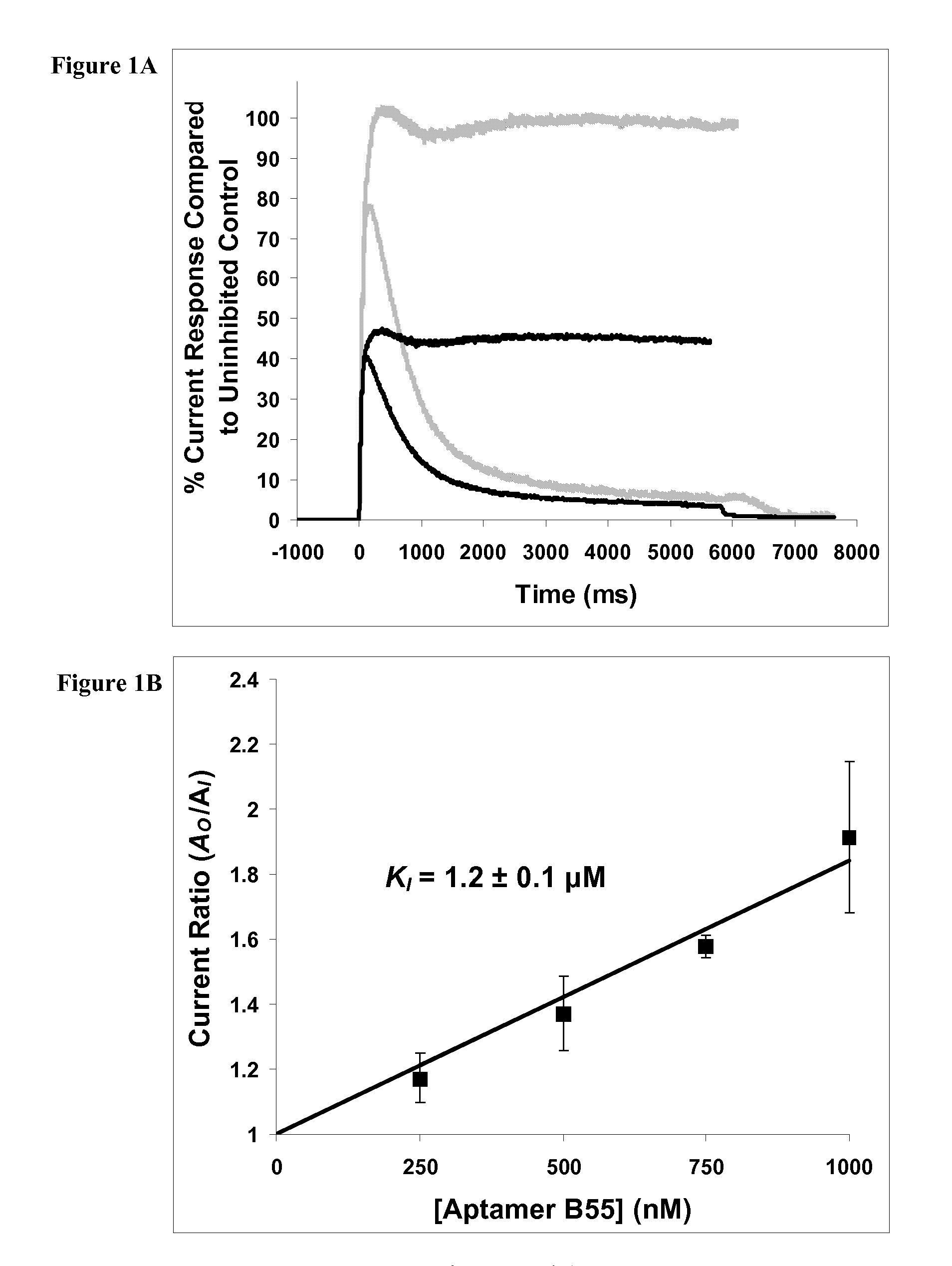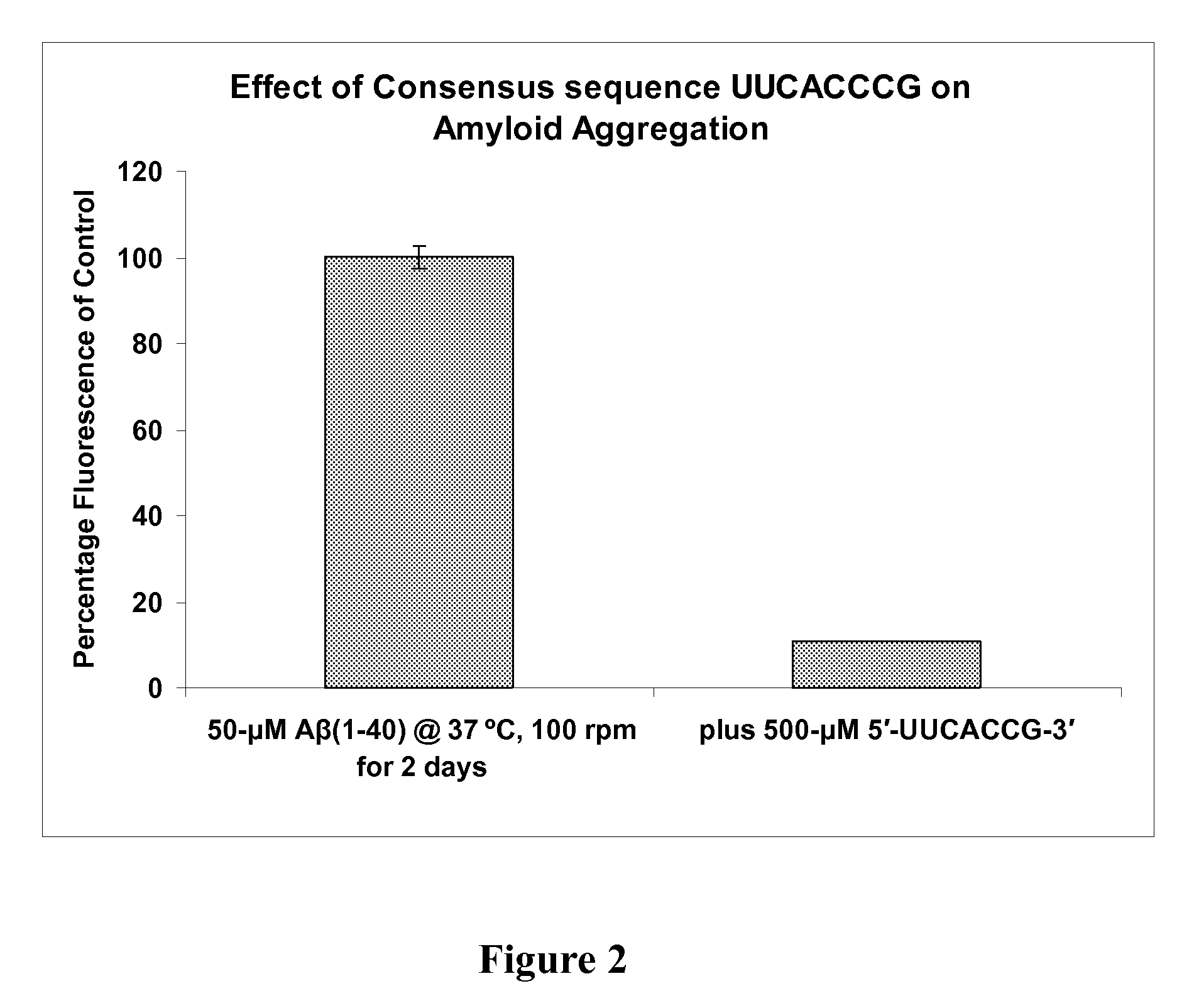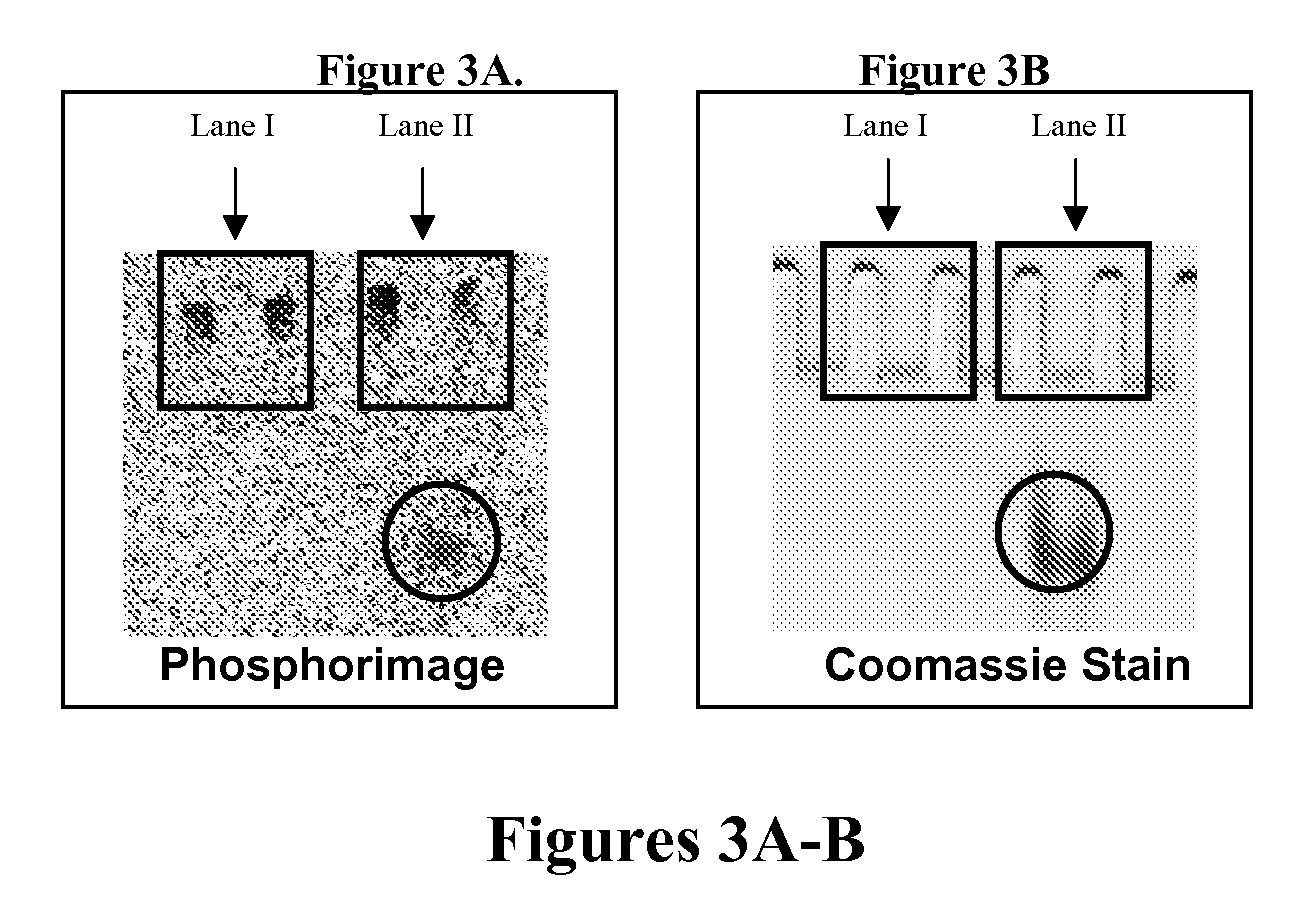Inhibition of beta-amyloid peptide aggregation
a technology of beta-amyloid peptide and aggregation, which is applied in the direction of biocide, heterocyclic compound active ingredients, drug compositions, etc., can solve the problems that no clear effect has been shown on the progression of disease, and achieve the effect of inhibiting aggregation and preventing aggregation
- Summary
- Abstract
- Description
- Claims
- Application Information
AI Technical Summary
Benefits of technology
Problems solved by technology
Method used
Image
Examples
example 1
[0132]The RNA aptamer sequences reported to bind with high affinity to the Aβ(1-40) peptide were analyzed by applicants using the online software TEIRESIAS. This sequence analysis led to the identification of motif similarity between the cocaine-binding site of the nicotinic acetylcholine receptor and the beta-amyloid peptide, allowing for the identification of a cocaine-binding site on the beta-amyloid peptide to which ligands of the cocaine-binding site on the receptor could bind, interact with, and affect peptide aggregation.
example 2
Whole-Cell Current Recordings
[0133]Carbamoylcholine-induced currents were recorded using the whole-cell configuration at room temperature (22-23° C.), pH 7.4, and a transmembrane voltage of −60 mV. The currents were amplified using an Axopatch 200B amplifier (Axon Instruments, Union City, Calif.) and filtered at 1 kHz (using a four-pole low-pass Bessel filter incorporated in the Axopatch 200B amplifier). The filtered signal was digitized using a Labmaster DMA 100 kHz digitizing board (Scientific Solutions, Chelmsford, Mass.) controlled by Clampex 8.1 data acquisition software (Axon Instruments, Union City, Calif.). Typical digitizing frequencies were 2-5 kHz. The recording glass pipets were pulled from borosilicate glass (World Precision Instruments Inc., Sarasota, Fla.), using a two-stage puller (L / M 3 P-A, Adams & List, NY) and a flame polisher (MF-83, Narishige, Tokyo, Japan). The recording pipet contained BC3H1 intracellular buffer, 140-mM KCl, 10-mM NaCl, 2-mM MgCl2.6H2O, 1-mM ...
example 3
Transient Kinetic Techniques
[0134]To investigate the mechanism of inhibition of the nicotinic acetylcholine receptor by amyloid peptides and alleviation of the inhibition, two rapid kinetic techniques (reviewed Breitinger et al., “Fast Kinetic Analysis of Ligand-Gated Ion Channels,”Neuroscientist 7:95-103 (2001); Hess et al., “Development and Application of Caged Ligands for Neurotransmitter Receptors in Transient Kinetic and Neuronal Circuit Mapping Studies,”Methods in Enzymology 291:443-473 (1998), which are hereby incorporated by reference in their entirety) were used. The approach used in these mechanistic investigations has been described in detail (Hess et al., “Mechanism-Based Discovery of Ligands that Prevent Inhibition of the Nicotinic Acetylcholine Receptor by Cocaine and MK-801,” Proc. Natl. Acad. Sci. USA 97:13895-13900 (2000); Hess et al., “Reversing the Action of Noncompetitive Inhibitors (MK-801 and Cocaine) on a Protein (Nicotinic Acetylcholine Receptor)-Mediated Rea...
PUM
| Property | Measurement | Unit |
|---|---|---|
| temperature | aaaaa | aaaaa |
| frequencies | aaaaa | aaaaa |
| series resistance | aaaaa | aaaaa |
Abstract
Description
Claims
Application Information
 Login to View More
Login to View More - R&D
- Intellectual Property
- Life Sciences
- Materials
- Tech Scout
- Unparalleled Data Quality
- Higher Quality Content
- 60% Fewer Hallucinations
Browse by: Latest US Patents, China's latest patents, Technical Efficacy Thesaurus, Application Domain, Technology Topic, Popular Technical Reports.
© 2025 PatSnap. All rights reserved.Legal|Privacy policy|Modern Slavery Act Transparency Statement|Sitemap|About US| Contact US: help@patsnap.com



